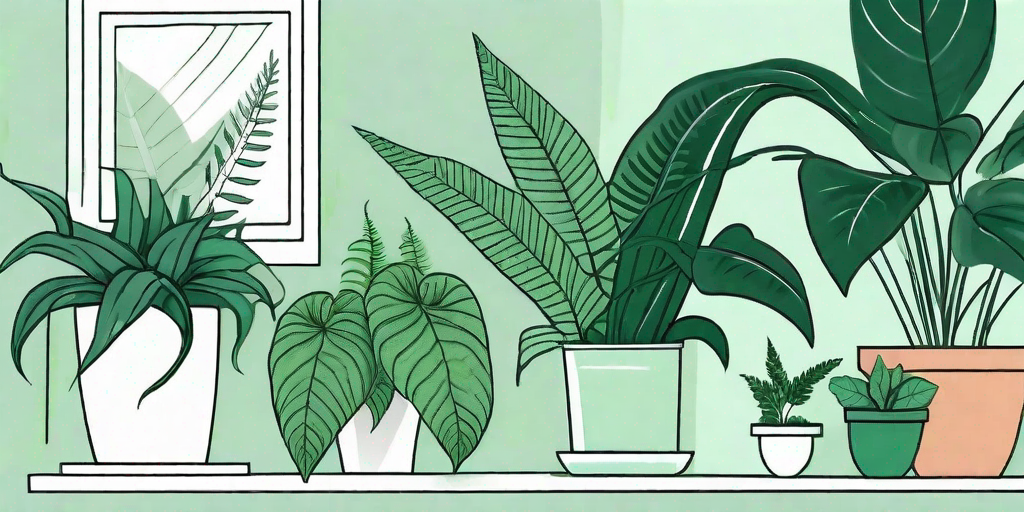
Water is the essence of life, and it's not just humans who need it. Plants, those green, leafy, photosynthesizing wonders, also require a good dose of H2O. But did you know that some plants are so thirsty, they can help keep your home hydrated? Yes, you heard it right! These moisture-absorbing plants are the unsung heroes of the botanical world, silently sipping on the excess water in your home, and in the process, creating a healthier living environment for you. So, let's dive in and explore these amazing plants, shall we?
The Science Behind Moisture-Absorbing Plants
Before we introduce you to these moisture-loving plants, let's take a quick detour into the world of plant science. You see, plants don't just absorb water through their roots. They also take in moisture from the air through a process called transpiration. This is essentially the plant's version of sweating, where water is drawn up from the roots and released into the air through tiny pores in the leaves. It's this process that makes some plants particularly good at absorbing moisture from the air.
But why should you care about moisture-absorbing plants? Well, if you live in a humid area or have rooms in your home that tend to get damp, these plants can help reduce the moisture levels. This can prevent the growth of mold and mildew, which are not only unsightly but can also cause health problems. Plus, these plants can help improve the air quality in your home by removing toxins and releasing oxygen. So, they're pretty much the perfect housemates!
Top Moisture-Absorbing Plants for Your Home
Now that you're well-versed in the science behind moisture-absorbing plants, it's time to meet the stars of the show. Here are some of the top moisture-absorbing plants for your home:
1. Peace Lily (Spathiphyllum)
The Peace Lily is not just a pretty face. This plant is a powerhouse when it comes to absorbing moisture. It thrives in humid conditions and can help reduce the levels of mold spores in the air. Plus, it's also great at removing toxins like formaldehyde and benzene. Just remember, the Peace Lily prefers indirect light and needs to be watered regularly.
2. English Ivy (Hedera helix)
English Ivy is another excellent choice for a moisture-absorbing plant. It's particularly good at reducing mold in the home. In fact, a study by the American College of Allergy, Asthma & Immunology found that English Ivy could reduce mold particles in the air by up to 94%. Just be aware that this plant can be invasive, so it's best kept in a pot and pruned regularly.
3. Boston Fern (Nephrolepis exaltata)
The Boston Fern is a classic houseplant and for good reason. It's one of the best plants for absorbing moisture and it also helps to purify the air. This plant loves a humid environment, so it's perfect for bathrooms or kitchens. Just make sure it gets plenty of indirect light and keep the soil moist.
FAQs About Moisture-Absorbing Plants
Now, let's tackle some of the most frequently asked questions about moisture-absorbing plants.
Do these plants really make a difference in reducing humidity?
Yes, they do! While a single plant might not make a huge difference, having several moisture-absorbing plants in your home can help to reduce humidity levels. Plus, they also help to purify the air and add a touch of greenery to your home.
How do I care for these plants?
Each plant has its own specific care requirements, but in general, these plants like a humid environment and prefer indirect light. They also need to be watered regularly, but be careful not to overwater as this can lead to root rot.
Can I have these plants if I have pets?
Some moisture-absorbing plants can be toxic to pets if ingested. For example, the Peace Lily and English Ivy are both toxic to cats and dogs. Always check the toxicity of a plant before bringing it into your home if you have pets.
Conclusion
So there you have it, the top moisture-absorbing plants for your home. Not only do these plants help to reduce humidity and improve air quality, but they also add a touch of beauty to your home. So why not give one (or more) of these plants a try? Your home and your lungs will thank you!















